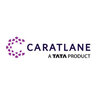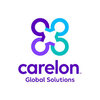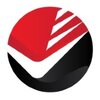Top 250 Agile Methodology Interview Questions and Answers
Updated 16 Jul 2025

Asked in Capgemini

Q. What are the pillars of Scrum?
The pillars of Scrum are transparency, inspection, and adaptation.
Transparency: All information about the project must be visible and understandable to everyone involved.
Inspection: Regularly inspect the progress and the product to identify any devia...read more

Asked in NTT Data

Q. What happens if the product owner adds a user story in the middle of the sprint?
It is not recommended to add user stories in the middle of the sprint.
Product owner should be advised to wait until the next sprint planning meeting to add the user story.
If the user story is critical, the team should discuss and decide if it can be ...read more

Asked in Wipro

Q. In an Agile project, can you perform automation within a sprint?
Yes, if the automation is planned and executed within the sprint timeline.
Automation should be planned and estimated during sprint planning
Automation scripts should be developed and executed within the sprint timeline
Automation results should be revi...read more

Asked in Rockwell Automation

Q. What comes first, grooming or sprint planning?
Grooming comes before sprint planning.
Grooming is the process of refining the product backlog items and making them ready for sprint planning.
Sprint planning is the process of selecting the backlog items for the upcoming sprint and creating a plan fo...read more

Asked in Vodafone Idea

Q. What reports do we use to present to the stakeholders in sprint review?
Reports used in sprint review to present to stakeholders
Sprint progress report
Product backlog report
Burndown chart
Velocity report
User story completion report

Asked in LTIMindtree

Q. What are epics and user stories?
An epic is a large body of work that can be broken down into smaller, more manageable pieces called user stories.
An epic is a high-level user story that is too big to be completed in a single sprint or iteration.
User stories are small, specific piece...read more


Asked in Victoria's Secret

Q. What is the difference between Acceptance Criteria and Definition of Done?
AC defines the scope of a user story while DoD defines the quality criteria for the completed work.
AC specifies what needs to be done to complete a user story
DoD specifies the quality criteria that must be met for the work to be considered complete
AC...read more


Q. Describe agile ceremonies in a project.
Agile ceremonies are regular meetings held during a project to ensure collaboration, communication, and progress towards goals.
Sprint planning: setting goals and tasks for the upcoming sprint
Daily stand-up: brief meetings to discuss progress and any ...read more

Asked in Capgemini

Q. How do you plan the capacity for a particular sprint?
To plan the capacity for a sprint, consider team velocity, individual availability, and any external factors.
Calculate the team's velocity by reviewing past sprints and measuring the average number of story points completed.
Consider individual team m...read more

Asked in Infosys

Q. How does the agile methodology work?
Agile methodology is an iterative approach to software development that emphasizes flexibility and collaboration.
Agile involves breaking down a project into smaller, manageable chunks called sprints
Each sprint involves planning, designing, coding, te...read more
Agile Methodology Jobs




Asked in Boston Harbor Consulting

Q. Explain the concept of a burn-down chart.
A burn down chart is a visual representation of the progress of work during a sprint.
It shows the amount of work remaining versus time left in the sprint.
It helps the team to track their progress and adjust their efforts accordingly.
It is updated dai...read more

Asked in Accenture

Q. What are burn up and burn down charts?
Burn up and burn down charts are visual representations of progress in Agile project management.
Burn down charts show the remaining work over time.
Burn up charts show the progress of work completed over time.
Both charts help teams track progress and ...read more

Asked in Rackspace

Q. Please name all SCRUM Ceremonies.
SCRUM ceremonies are events that help the team to inspect and adapt their work.
Sprint Planning: Planning the work for the upcoming sprint
Daily Scrum: A daily meeting to inspect progress and plan for the day
Sprint Review: A review of the work complete...read more

Asked in CaratLane - A Tata Product

Q. Explain the 4 Agile Values and 12 Principles.
Agile values focus on individuals and interactions, working software, customer collaboration, and responding to change. The 12 principles guide the Agile approach.
Agile values prioritize people and their interactions over processes and tools
Working s...read more

Asked in Shell

Q. Briefly describe a few subsets of the Agile Manifesto.
Agile Manifesto subsets include customer collaboration, responding to change, and working software.
Customer collaboration over contract negotiation
Responding to change over following a plan
Working software over comprehensive documentation

Asked in Carelon Global Solutions

Q. What is SAFe Agile?
Safe agile is a framework for scaling agile practices to large enterprises.
Safe stands for Scaled Agile Framework
It provides a structured approach to scaling agile practices
It includes roles, ceremonies, and artifacts for large-scale agile developmen...read more

Asked in American Broadcasting Company

Q. What are the benefits of scrum?
Scrum offers several benefits for teams and organizations.
Improved productivity and efficiency
Increased transparency and collaboration
Faster time-to-market
Adaptability to changing requirements
Enhanced customer satisfaction
Better risk management
Empowe...read more

Asked in Black Knight

Q. How do you handle testing in Agile methodologies?
Testing in Agile involves continuous testing throughout the development cycle.
Collaborate with the development team to ensure testing is integrated into each sprint
Use automation testing tools to speed up the process
Prioritize testing based on user s...read more

Asked in CitiusTech

Q. Explain Agile and Agile Scrum ceremonies.
Agile is a methodology that emphasizes flexibility and collaboration. Agile Scrum is a framework for implementing Agile.
Agile focuses on delivering working software in short iterations
Agile values individuals and interactions over processes and tools...read more

Asked in VRIZE

Q. What is scrum velocity?
Scrum velocity is the measure of the amount of work a scrum team can complete in a sprint.
It is calculated by adding up the number of story points completed in a sprint.
It helps the team to plan and estimate future sprints.
It is not a measure of prod...read more

Asked in Godrej Industries Group

Q. What are the ceremonies in Agile?
Ceremonies in agile are regular meetings that help teams to plan, track progress, and improve collaboration.
Ceremonies include daily stand-up meetings, sprint planning, sprint review, and retrospective meetings
They help teams to stay on track, identi...read more

Asked in IBM

Q. What are EPICs and stories?
EPIC is a large body of work that can be broken down into smaller, more manageable pieces called stories.
EPIC is a high-level requirement that is too large to be completed in a single iteration.
Stories are smaller, more detailed requirements that can...read more

Asked in GraffersID

Q. How would you break down the following criteria into stories and assign them points?
Breaking down criteria into stories and assigning points
Identify user stories based on criteria
Estimate points for each story based on complexity
Prioritize stories based on business value
Create sprint backlog based on prioritized stories

Asked in Bentley Systems

Q. Can you explain the sprint ceremony?
Sprint ceremony is a set of meetings held during a sprint in Agile software development.
Sprint planning: Discussing and prioritizing the user stories for the upcoming sprint.
Daily stand-up: A short daily meeting where team members share progress, dis...read more

Asked in Accenture

Q. What is the difference between a use case and a user story?
Use cases describe the interactions between a system and its users, while user stories focus on the specific needs or requirements of the end user.
Use cases are typically more detailed and comprehensive than user stories.
Use cases often involve multi...read more

Asked in Cognizant

Q. What is the Scrum framework?
Scrum is an agile framework for managing and completing complex projects.
Scrum involves a team working together to deliver a product incrementally
It emphasizes on frequent inspection and adaptation
It consists of three roles: Product Owner, Scrum Mast...read more

Asked in Persistent Systems

Q. What is SAFe? Explain it.
SAFe (Scaled Agile Framework) is a framework for scaling agile practices across an organization.
SAFe provides a structured approach to scaling agile practices beyond individual teams to the entire organization.
It includes roles, ceremonies, and artif...read more

Asked in Boeing

Q. What are the scrum principles?
Scrum principles are the foundation of the Scrum framework that guide the team to work together effectively and efficiently.
Empirical process control
Self-organization
Collaboration
Value-based prioritization
Time-boxing
Iterative development
Continuous im...read more

Asked in IntraEdge

Q. How many sprints are in a PI?
The number of sprints in a PI varies depending on the organization's preference and the length of the PI.
The standard PI length is 5 sprints, but some organizations may choose to have 4 or 6 sprints.
The number of sprints in a PI should be consistent ...read more

Asked in Sydler Technologies

Q. Explain Release Strategy.
Release strategy is a process to control the release of purchase requisitions and purchase orders based on predefined criteria.
Release strategy is used to ensure that the right people approve the purchase requisitions and purchase orders.
It involves ...read more

Top Interview Questions for Related Skills
Interview Experiences of Popular Companies










Interview Questions of Agile Methodology Related Designations



Reviews
Interviews
Salaries
Users











